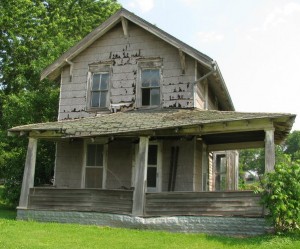The city of Springfield has demolished more than a dozen of the 40 abandoned east-side properties the city bought at a tax auction last summer.
Public works director Mike Norris said Wednesday the remainder will be torn down as crews are available.
“Once it’s all said and done, and maybe before if there’s already interest, we’ll probably ask the city council to declare them surplus property and offer them for sale,” said Norris.
The city used a little more than $26,000 from federal, community-development grant funds to purchase the properties at a county auction of tax-delinquent parcels last August. Norris said 15 properties have been razed since February. Work continued this week on properties at 2323 E. Spruce St. and 812 S. Martin Luther King Drive.
Norris said the city will retain ownership and maintenance responsibility for the properties until they are sold.
Neighborhood reaction
“In my neighborhood, I’ve had four of them knocked down. I’m glad to see them gone,” said Margaret Griffin, president of the C. Lee Carey Neighborhood Association.
Griffin, who has lived in the area for more than four decades, said abandoned properties attract trouble.
“You have people tearing off boards on doors and windows and going inside,” said Griffin. “I’m afraid somebody could get hurt.”
Ward 2 Ald. Gail Simpson said she is encouraged by the progress toward ridding neighborhoods of abandoned properties, including the city demolition effort.
She said the key is in the follow-up: finding someone to build new homes and businesses on the lots.
“We’re not looking at the old models. We’re looking at something completely new that will completely change that area,” said Simpson.
“Of course, there are many more (abandoned properties) to go … but they are making progress,” Simpson added.
220 vacant lots
The city’s purchase-and-demolish program is among several local initiatives aimed at creating a “land bank” of properties on the east side that eventually could be sold for development.
A survey by The Springfield Project last year found there are 220 vacant lots alone in an area bounded by 11th Street to Martin Luther King Drive and Cook Street to South Grand Avenue.
“Something has to be done, either tearing down (abandoned properties) or rehabilitating, and not many people are doing rehabilitating right now,” said Tim Rowles, executive director of The Springfield Project.
He said the not-for-profit group has purchased 22 vacant lots and has contracts to buy 17 more, also using federal community-development grant funds.
“When we wrote that grant, we wrote it for vacant lots,” said Rowles. He said the group does not have the resources to handle the legal and tax complications that often come with abandoned homes and commercial buildings.
Rowles added that more than 80 vacant lots have been purchased or have contracts through joint efforts of groups such as The Springfield Project, TSP-Hope, Nehemiah Expansion and the Brown Street Church.
Smaller grants expected
City economic development director Mike Farmer said Springfield was notified this week that budget cuts will mean smaller community-development block grants through the U.S. Department of Housing and Urban Development.
“The status is uncertain, given what’s going on with the federal budget,” Farmer said.
The last grant, $2 million, was approved last summer for east-side development. HUD grants have been used for a variety of redevelopment projects, including the Old South Town project at 11th Street and South Grand Avenue.
Farmer said the grants are based on a formula that takes into account population and poverty rates.
***
Study results expected next month
Results of a commercial-development study on the east side of Springfield are expected in mid-May.
The consulting firm PGA&V of St. Louis started the study last fall at the request of the Greater Springfield Chamber of Commerce. The report is an update of a 2002 study by PGA&V that became the basis for the city’s east-side master plan.
“We have some community outreach and additional planning work to do as a result of the outreach,” said chamber executive vice president Erich Bloxdorf.
The study, which is expected to make recommendations on attracting commercial and retail development, covers the area from 11th Street to Martin Luther King Drive and Cook Street to South Grand Avenue.


